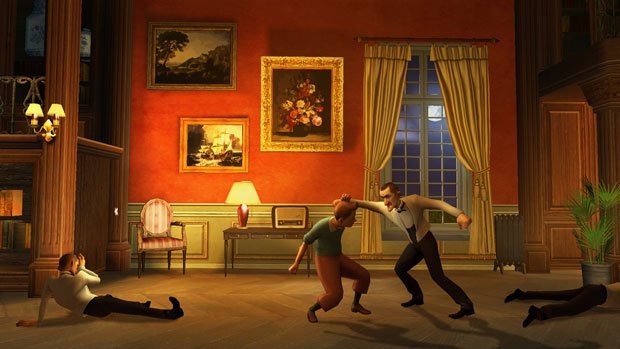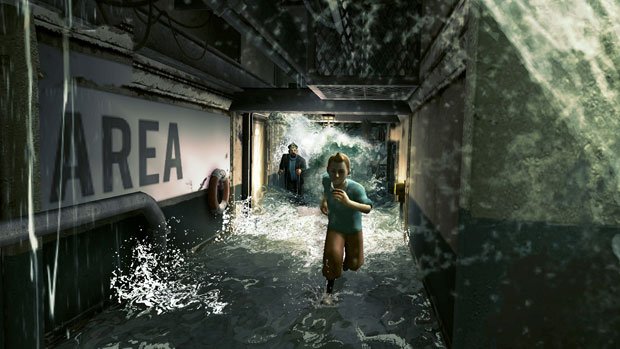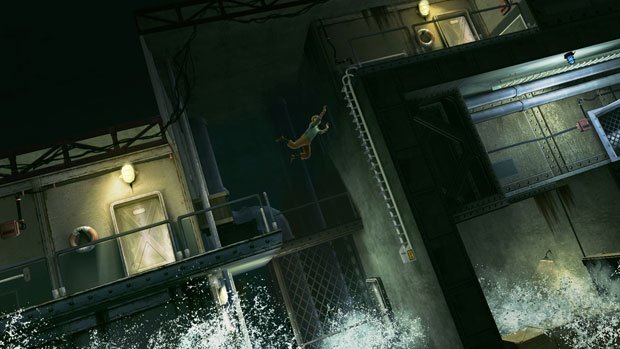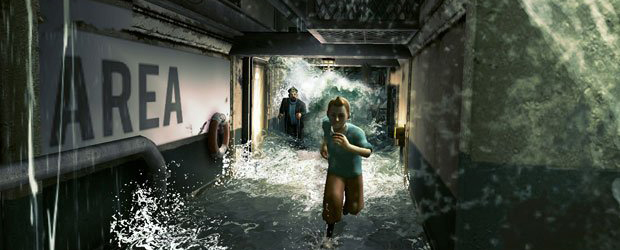GamesRadar+ Verdict
Pros
- +
Cool cooperative gameplay
- +
Excellent voice acting
- +
Charming cinematics
Cons
- -
Easy puzzles
- -
easy combat
- -
Needless repetition
- -
Swashbuckling
- -
of all things
Why you can trust GamesRadar+
Tintin is a Belgian boy who somehow manages to be a journalist without ever writing a word, who knocks out grown men twice his size with a single fling of his fist, and who lives in a world where the only woman is a jolly opera singer who exists only to make us laugh. In short, his life plays out like a little boy's dream – or at least the type of boy who juggles ambitions of winning the science fair with fantasies of clobbering the local bully. The good news is that it's not a disagreeable dream, and while it suffers from excessively easy gameplay and forced variety, The Adventures of Tintin is a bit more rewarding than its movie franchise origins might suggest.

Above: These guys can't be getting paid enough for this
If you've already seen the Steven Spielberg movie (it’s out in the UK), you'll find no surprises here. The narrative is much the same, although the gameplay and extra features allow the film's one-and-a-half hours to morph into a four or five hour odyssey across Europe and North Africa. It could be worse, and there are enough shifts in scenery to soften an unmistakable sense of repetition. That's partly because the characterization is every bit as strong as it is in the film. Tintin himself retains the unique mixture of audacity and Boy Scout perseverance that's made him such a hit among the European crowd since 1929, and his dog Snowy provides a welcome dose of cuteness, even if he's a bit underused. Then there's poor old Captain Haddock, long known as a drunk in Herge's original comic books, who's reduced here to a kid-friendly depressive shipwreck of a man.
Tintin is at its best when it behaves like a bowdlerized version of platformers like Shadow Complex and Super Metroid - sidescrolling Tintin, Snowy, and the befuddled Captain Haddock along corridors, caves, and medieval ruins. Even better, the two-dimensionality occasionally gives way to the third dimension, as in the corridors that sometimes appear when Tintin finds one of the collectible crabs scattered throughout each level. Sometimes Tintin comes across a hole that only his dog Snowy can get through, and you'll briefly control the plucky fox terrier as he braves the subterranean rat race to fetch a key. On other occasions, Tintin squanders his precocious intellect on insultingly simple puzzles, such as when he throws a can into two massive gears to keep them from spinning. Sometimes poor old Captain Haddock is even lucid enough to help as well, and he'll help you set off a two-part trigger.

Above: Caught in a storm? No worries, just floor it
One reason for this aspect's comparative appeal is the way it works these puzzles into the overly easy combat, since getting around the protection of an umbrella-toting goon often takes more thought than unraveling a centuries-old enigma. Later on, enemies start to carry shotguns and assault rifles, but even these are no match for Europe's favorite pugilistic underage reporter. Not only does Tintin knock out weather-hardened ruffians or duty-bound butlers with a single kick (leaving their rear ends embarrassingly pointed toward space), but he also sneaks up behind them and pile-drives their heads into the ground, all for the sake of getting the scoop on the story of Captain Haddock and his family's curse. If only journalism were always this fun.
It's worse when the game tries to dabble in another genre, such as when Tintin and friends take part in dogfights, or dodge tornadoes in propeller planes, or careen down desert canyons with motorbikes. These sequences thrive more on tedium than challenge, and at best they're a distraction from the superior platforming. Avoiding a tornado is a simple case of hitting the gas, for instance, and Tintin's motorcycle turns so smoothly in the chase scenes that you might feel as though you're playing Flower instead of Mario Kart. Then there are the disappointing boss fights, which needlessly repeat the same pattern at least three different times while only changing the background scenery.

Above: Tintin doesn't need water parks; he makes his own
Yet no other aspect of the game seems quite so clunky as the on-rails sword-fighting matches, which occur when Captain Haddock reveals that he takes learning his family history far more seriously than the folks at the Mormon archives. While Ubisoft may have intended an exhilarating jumble of parries and ripostes, it quickly devolves into flailing your saber about and hoping the pointy end sticks in something.
Thankfully, the Adventures of Tintin don't end once the credits roll and the five-hour interactive movie is finished. Once you've solved the mystery of the unicorn, you can use your Kinect, PlayStation Move, or Wiimote to reenact many of the game's non-platforming moments with motion controls in a series of challenges. It's a good move, since many of the sequences that stumbled in the story mode take on a new life here. Hold your hands up as though you're driving a car, for instance, and the chase scenes become more satisfying. Learn to parry and stab in the sword fighting sequences, and you may find that flailing about your arms can be fun. It's debatable whether these additions make the game "Better with Kinect" (or your motion controller of choice), but they do go a long way toward understanding why the sequences were included in the first place.

Above: Encyclopedia Brown has nothing on Tintin
None of the other post-game goodies match up to the cooperative mode, however, which takes you on a trip through Haddock's dreams after Thompson and Thompson of Scotland Yard inadvertently knock him out. Here, the bosses are better, the level designs more ingenious, and the surreal imagery provides a welcome break from the mundane settings of the story proper. Even better, you can unlock different characters with varying abilities. Tintin, for instance, sports a grappling hook that was absent from the platforming parts of the story, and the singer Bianca Castafiore double jumps as well as any ash-smothered Spartan.
As a kid's game - and by that we mean kids who aren't old enough to figure out why their older brothers really play as Cammy in Street Fighter - The Adventures of Tintin is charmingly adequate. Its breezy gameplay keeps it accessible to a fault, but its insistence on including a jumble of different gameplay styles damages what may have been remembered as a decent platformer. Toss out the boring airplane sequences, add some variation to the boss fights and puzzles, and inject the whole project with a healthy dose of difficulty, and The Adventures of Tintin coulda been a contender. Even though it has its flaws, The Adventures of Tintin never veers from decent to awful, and Ubisoft Montpelier deserves credit for creating a rare wonder - a movie-spinoff that doesn't completely suck.
More info
| Genre | Adventure |
| Description | The Adventures of Tintin is short, repetitive, and easy, but somehow that doesn't mean it's bad. |
| Platform | "PC","Xbox 360","PS3","3DS","Wii" |
| US censor rating | "Everyone 10+","Everyone 10+","Everyone 10+","Everyone 10+","Everyone 10+" |
| UK censor rating | "","","","","" |




